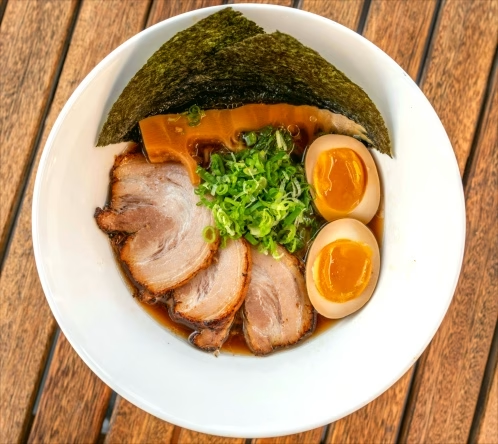Mirin, a special seasoning in Japanese cuisine, is the secret ingredient that adds a sweetness to dishes. If you want to create dishes that truly embody the flavors of home-cooked Japanese cuisine, learn more about this unique seasoning! Learn how to use mirin to create savory and sweet dishes.
What is mirin?
Mirin is a fermented product, a pale yellow, transparent liquid made from sweet glutinous rice and koji. Through the saccharification and fermentation of the rice and koji, it has a high sweetness content, with sugar comprising approximately 40% and alcohol at approximately 14%.
Mirin, with its sweet flavor, plays a crucial role as a seasoning in Japanese cuisine, being used in a wide variety of dishes, including steaming, boiling, braising, and stir-frying. It is also used in marinades and sauces.
Mirin available on the market is primarily categorized as “main mirin” and “flavored mirin.” Flavored mirin, however, has a lower alcohol content of approximately 1% and is enhanced with other flavorings such as syrup, starch saccharify solution, MSG, and salt. The two types differ somewhat in alcohol content, flavor, and the resulting taste after cooking.
Adding a small amount of mirin to a dish, its sweetness and alcohol content can enhance the flavor of the ingredients and dish. The alcohol in mirin helps remove the fishy smell and enhance the flavor, similar to the effect of rice wine in cooking.
The sugar content in mirin adds a glossy sheen to dishes, enhancing their appetizing visual appeal. The sweetness can temper saltiness and enrich the flavor, similar to the effect of adding sugar to salty dishes.
How can mirin be used in cooking?
Use it when marinating meat to remove the fishy smell.
When marinating meat or fish with soy sauce and grated ginger, chopped green onions, etc., you can add a small amount of mirin to the marinade. This removes the fishy smell and enhances the flavor.
Use it in sauces to enhance the sweetness of dishes.
Representative dishes and sauces: Yakiniku (Ginger Gourmet Pork), Teriyaki Sauce
The classic Japanese dish, Yakiniku (Ginger Gourmet Pork), is often prepared with mirin. Mirin has a similar effect to sugar and rice wine, bringing out the sweetness and aroma of the sauce after cooking.
The sauce for Japanese Yakiniku (Ginger Gourmet Pork) consists of soy sauce, mirin, sake, a little sugar, and a little water. Try using 3 tablespoons soy sauce, 2 tablespoons mirin, and 2 tablespoons sake or rice wine. Feel free to adjust the proportions based on the strength of the soy sauce and your personal preference.
Marinate slices of pork belly or thinly sliced pork with grated ginger, sake, or rice wine. Prepare a separate sauce. Stir-fry the pork first, then add the sauce and stir-fry. Add a little more grated ginger and sprinkle with sesame seeds before serving. This is Japanese-style ginger-glazed pork.
Use this sauce when stewing to enhance the flavor and add a touch of gloss to the dish.
Representative Dish: Japanese-Style Braised Fish
Whether using a lightly salted soy sauce or miso-based braised fish, mirin is a staple in Japanese home-style braised fish. The salty flavors of soy sauce and miso are enhanced by the addition of mirin, which softens the saltiness and adds a subtle brightness to the braised fish, making it more appealing and delicious.
Seasonings for Japanese braised fish include sliced ginger, soy sauce, sake or rice wine, mirin, a small amount of sugar, and water. Fish, such as mackerel and sea bream, can be blanched before serving.
Place the fish in the pot, top with ginger slices, and cover the fish with a 1:1 ratio of soy sauce and sake. Add a little sugar and water, adjusting the saltiness of the sauce to your preference.
When braising the fish, add a small amount of mirin before removing it from the pot to enhance the flavor and brighten the finished dish.


Leave a Reply